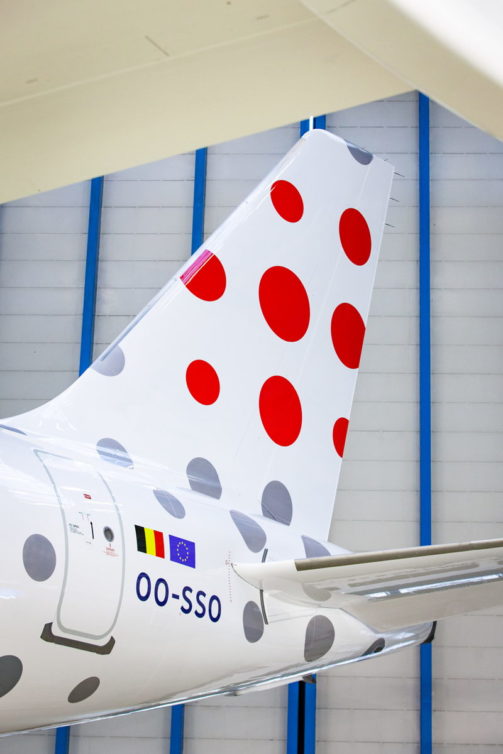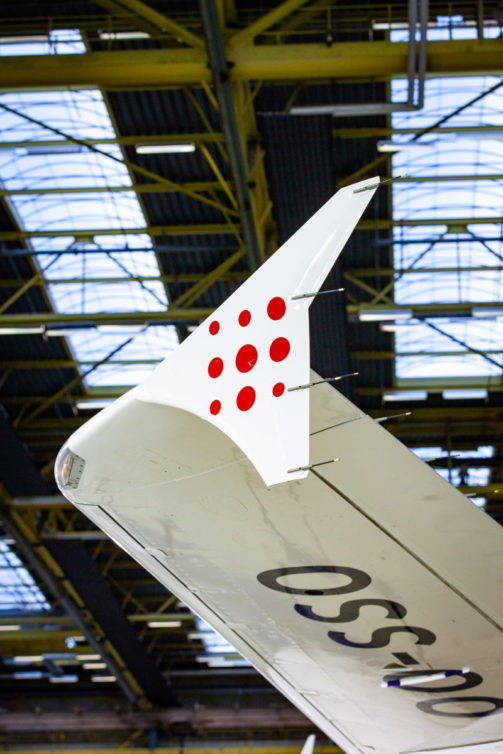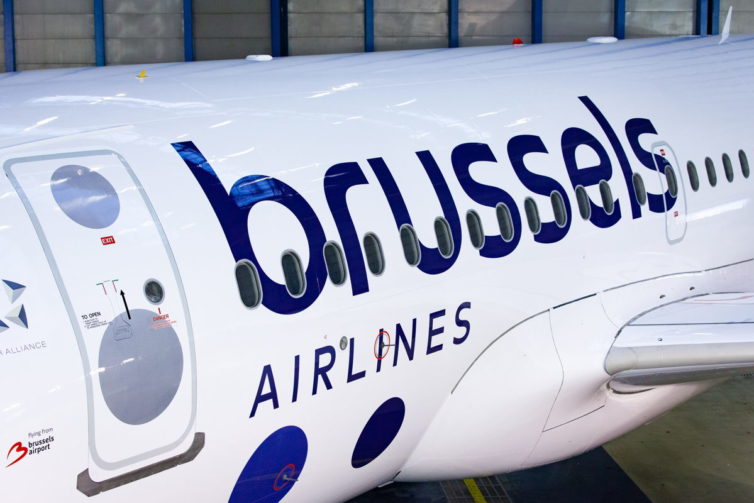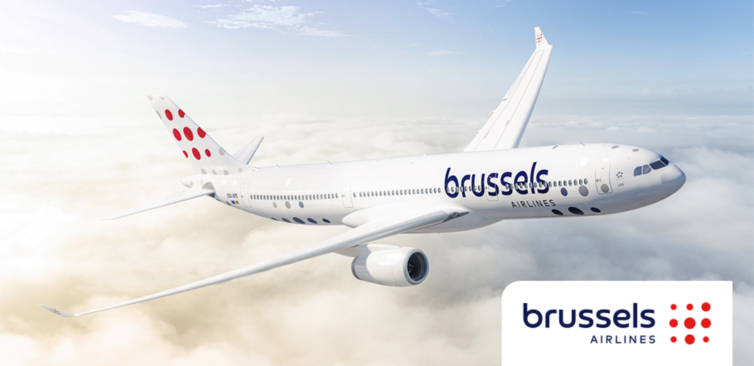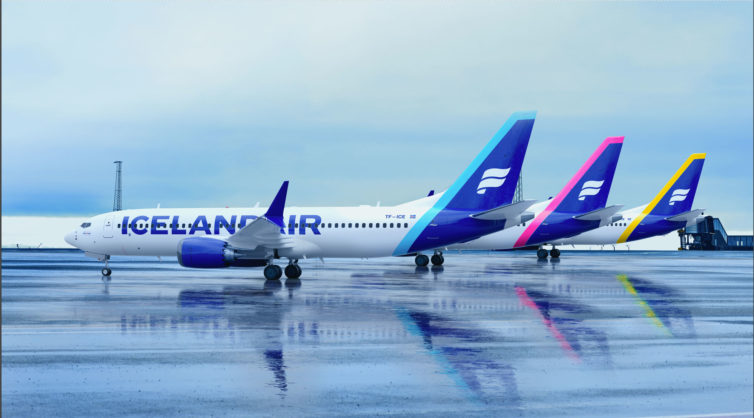
Icelandair’s livery refresh features larger titles with a revised font, and a variety of new colors on the tail – Image: Icelandair
In what Icelandair’s director of marketing Gàsli S. Brynjólfsson describes as “More of a refresh, not a total change,” the airline has begun rolling out an updated livery and associated marketing collateral.
Icelandair’s current branding was last updated in 2006. “We needed to strengthen our story and the emotional part of the brand,” Brynjólfsson said. “Icelandair culture has changed a lot, it’s much more relaxed than it was before.”
For perspective, he explained that the idea was to democratize the brand, as the current white, blue, and gold livery had been seen as a bit stuffy. “We took the gold out – it came up a few times in the talks with experts and focus groups that the gold-and-blue feels a bit royal – Icelandair is not a royal airline – Iceland is very democratic with small power differences,” he said.
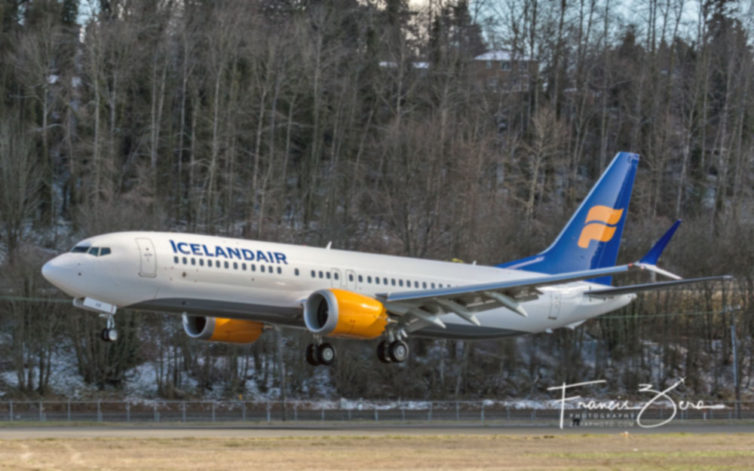
Icelandair’s now-former livery seen on its very first 737 MAX-8, TF-ICE, which was also the first in the fleet to receive the update
“We are so much like a normal Icelandic company – the power distance between people is very little – we’re a company of equals, so that’s something that needs to be represented in the brand,” he explained.
For those who are fans of the airline’s iconic special liveries like Hekla Aurora and Vatnajökull (the glacier livery), he was reassuring. “We’re definitely going to continue to have special liveries.” But don’t expect to see the new livery on the airline’s substantial 757 fleet.
“I doubt that we will do the refresh on the 757s – we’re doing just the MAX to begin with. The fate of time for those planes (the older 757s), combined with the cost of changing those planes, would not be reasonable.” He did say the airline’s two 767s would likely receive the makeover at some point.
We don’t wade into pandemic talk too often here at AirlineReporter. This place is our escape from pandemic-related troubles, and we hope it is for you all too. But every once in a while our radar picks up a news update that’s hard to ignore.
United made big waves last year by being the largest major airline to mandate vaccination for all its employees. My day job as a hospital-based medical resident in New York City has shown me firsthand how powerful vaccination can be in saving lives. So consider me very pro-vaccination. Still I imagine it isn’t easy for leaders of large organizations to impose mandates, even when they’re confident it’s the right thing to do.
Earlier this month United CEO Scott Kirby published a letter to United employees for the New Year. In it, he mentioned that thanks in large part to the vaccine mandate, the company has zero employees admitted to a hospital with COVID, despite 3,000 employees currently positive for the virus. That was compared to the pre-mandate days, when more than one employee a week was dying, not to mention the others who were in the hospital with severe infections. It’s a huge win for employees’ health, and also for the airline’s passengers in terms of reduction in viral exposure.
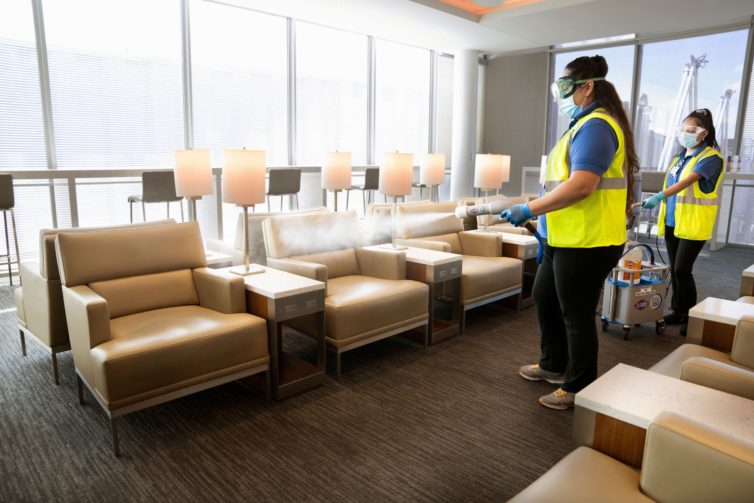
Plastering chairs with bleach may help fight COVID a bit … but vaccination helps more – Photo: United CleanPlus
I can’t imagine a more powerful data point to support vaccination in the air travel workforce. As someone who has seen a lot of people die of the virus right in front of me, I’m grateful to United and any other airline that makes bold choices for the sake of health and safety. And my particular thanks to the airline employees and other workers getting vaccinated and keeping our air travel infrastructure going during these crazy times. Hopefully thanks to public health measures like vaccination, I’m more likely to see you in the skies than in my hospital.
We welcome you to share thoughts in the comments section below. Please keep things civil. Debate about employee vaccination mandates is reasonable as part of a free discourse, but do not post frank pseudoscience.
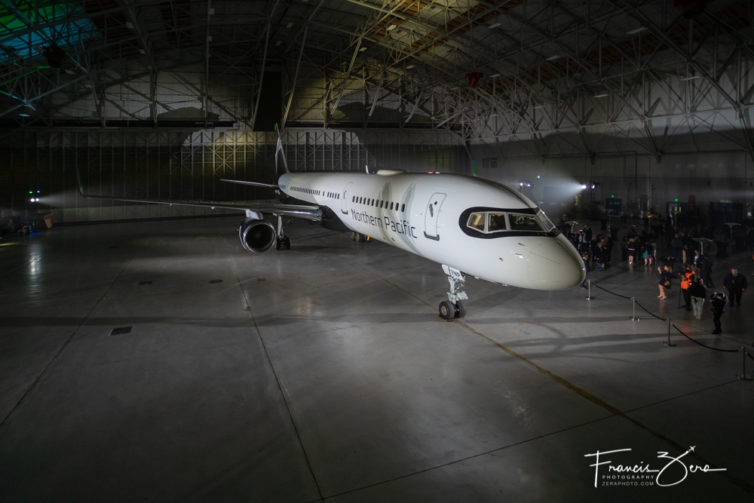
Northern Pacific’s fresh livery on its first 757-200 at SBD
Planning to connect cities in the United States to Japan and Korea via its hub at Ted Stevens International Airport in Anchorage, Alaska, a la Icelandair’s routes to Europe via Reykjavik, Northern Pacific Airways (NPA) rolled out their first painted 757-200 at an extravagant event at southern California’s San Bernardino International Airport (SBD).
The airline is aiming to launch service later in 2022, although that may slip to 2023 due to the complexities of starting an international route system.
Founded in 2021 by Rob McKinney and Tom Hsieh, Northern Pacific has already purchased six Boeing 757-200 airliners, and their first one has been painted and is completing its C-check at Certified Aviation Services at SBD. The three-class interior (business, economy plus, and economy) has not yet been installed. The airline is a subsidiary of FLOAT Alaska, which also owns regional carrier Ravn Alaska.
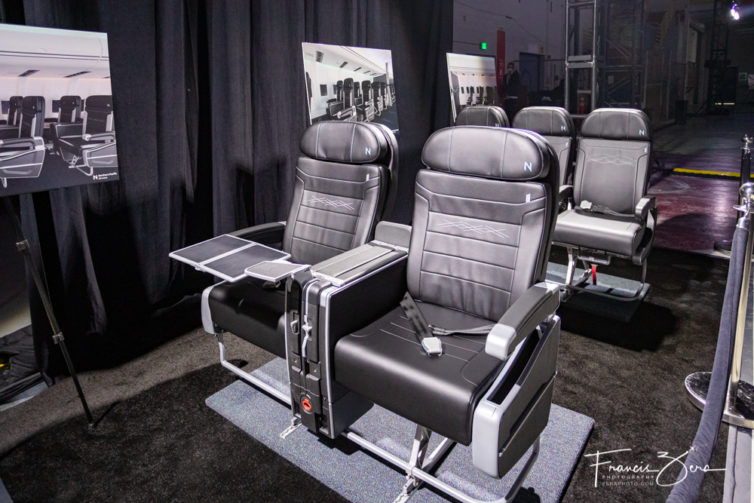
The interiors will be of the three-class variety typical of LCCs: business, premium economy, and economy.
We sat down with NPA’s CEO Rob McKinney for a quick interview before the unveiling.
Asked why they opted for Boeing 757s, which are getting long in the tooth (Boeing stopped production in 2004), McKinney said “it can do the mission we need out of the gate,” especially as the Airbus A321XLR is not available yet.
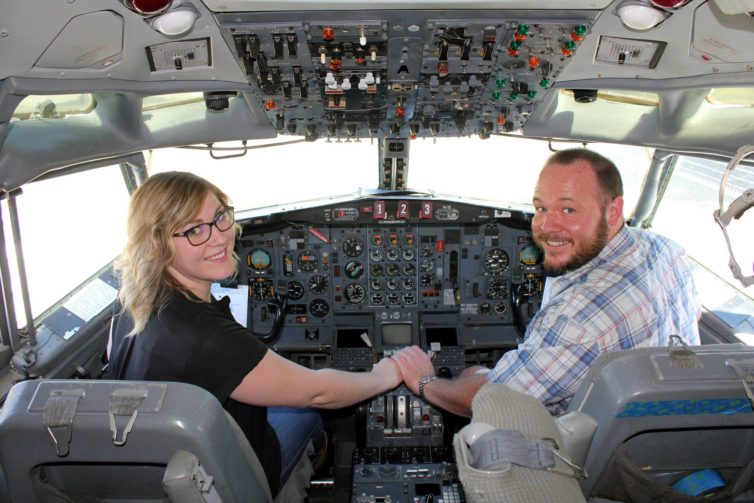
What is love? Letting your gal sit left seat in a 727!
On July 10, 2021, my beautiful wife and soulmate Brittany Brown passed away due to colon cancer. Now, that is a sentence that I never thought I would be writing on AirlineReporter… or anywhere, for that matter. She was diagnosed on December 13, 2019 with Stage 2 (just two months after our wedding and three days before her 31st birthday), and she fought with all her might, but this cancer was unbeatable. #fuckcancer
As I make my way through the different stages of grief and remember all of our time that we had together, I have realized how much of a perfect travel partner she was for me – and how I was for her. During the year and a half that Brittany battled cancer, I was not very public about our situation — only some close friends and family knew. So, why share this very personal life experience on the blog? There are a few reasons.
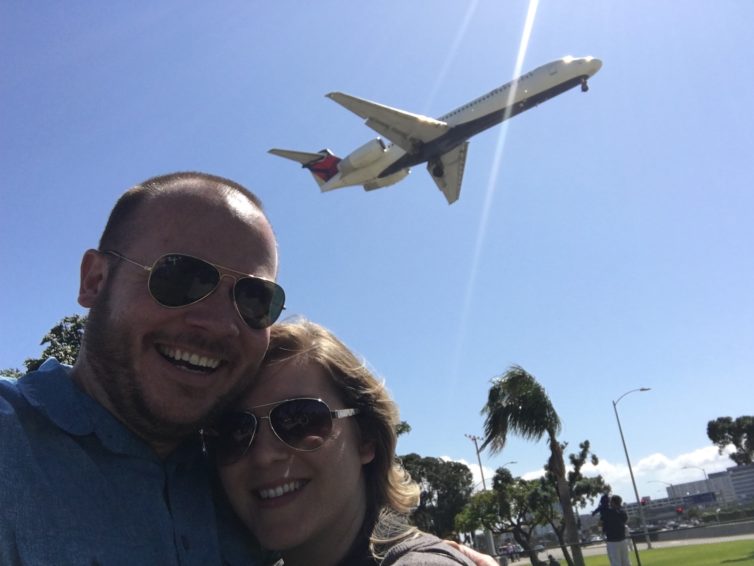
Enjoying airplanes landing during DorkFest at LAX
To honor some of the great travel memories that we experienced. To share some stories that will have a home on AR. It will be therapeutic for me. And I trust you. I have been doing this airline blog thing for over 13 years. This website is a passion for me, the other writers and hopefully for many of you. When our lives get complicated, content slows down (or stops), and that is okay. Many of you have been through your own ups and downs and I cannot even begin to say how grateful I am for the love and support of the AvGeek community through everything.
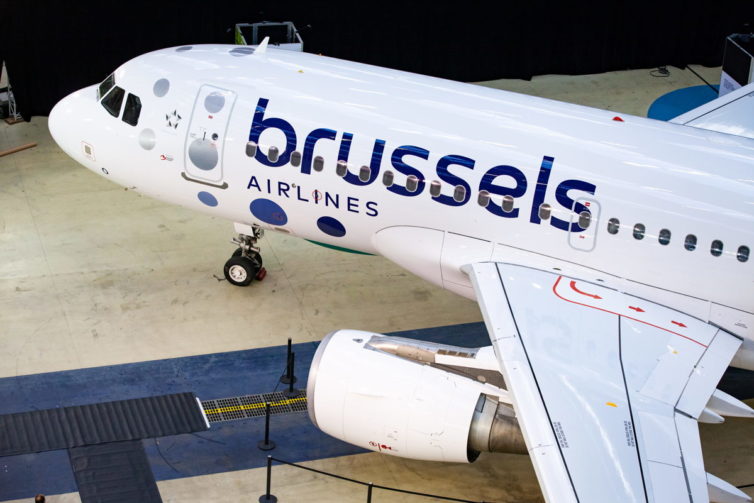
Brussels Airlines – Belgium’s flag carrier and part of the Lufthansa group – was forced to shut down operations completely during the first wave of the pandemic last year. Since reopening they’ve been gradually ramping services up again. And to keep the momentum going they recently revealed a complete livery redesign.
-
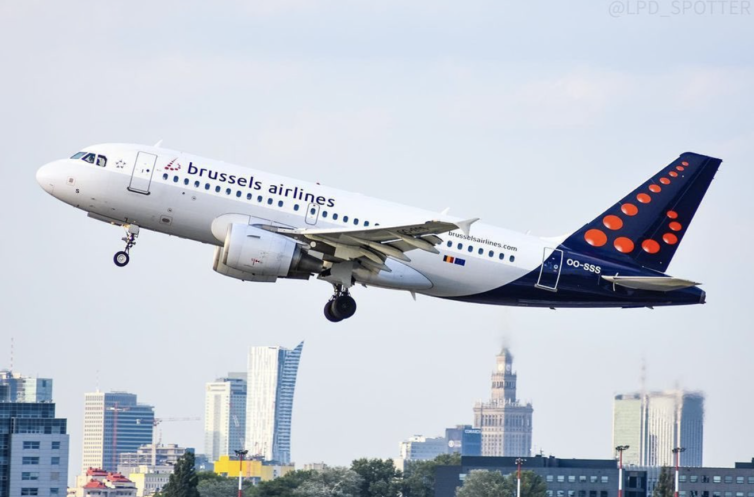
-
The old
-
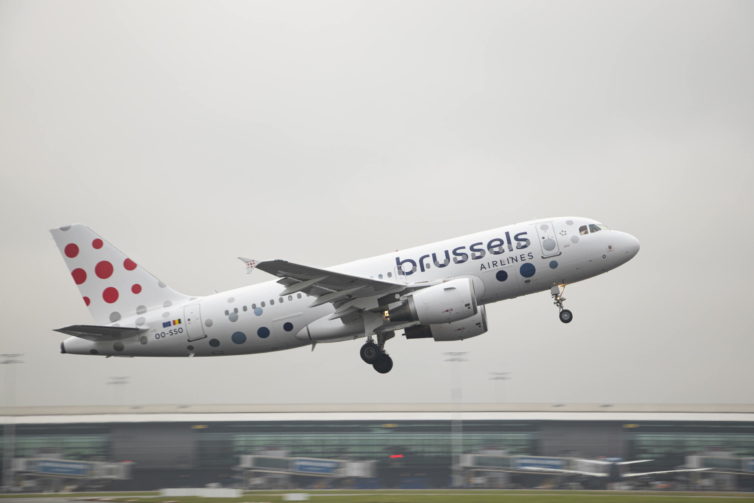
-
The new
It’s a spin on the Eurowhite look that’s been increasingly popular around the world: a white background without solid colors or cheatlines on the fuselage. There’s no more dotted “B” on the tail either, but dots still make an appearance on the tail and the front of the fuselage. The nine orange dots in a 3×3 grid (the new core logo) are all different sizes, representing the diversity of the airline’s crew and customers.
I think the colors are the strongest part of the new design. The gorgeous deep blue text goes nicely with the red on the tail. The new fonts are an improvement too. But all those dots? I think they work better on the longer A330 (see the lower-right pic above). But on the A320 they cover more of the fuselage, and the plane ends up looking like it has technicolor chicken pox. Your overall opinion of the livery likely depends on your attitude towards the Eurowhite look. But compared with the dated prior livery, it’s definitely a change for the better. Another clear win is that white paint is lighter and reflects more heat, which offers a degree of environmental benefit.
Comment below to let us know what you think of the new look, livery enthusiasts!
All images courtesy of Brussels Airlines.










